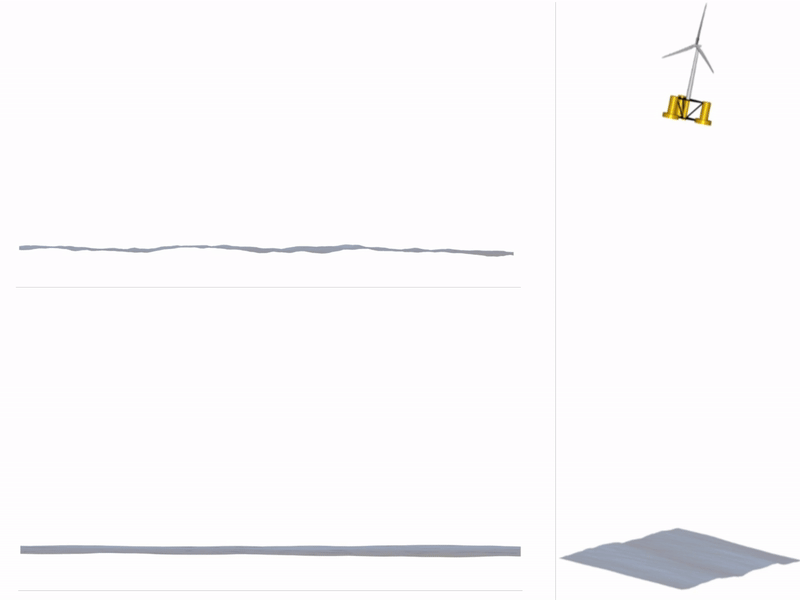Forum
Important Notice for New User Registrations
To combat an increasing number of spam and bot registrations, we now manually approve all new user registrations. While this may cause a delay until your account is approved, this step is essential to ensure the quality and security of this forum.
To help us verify your registration as legitimate, please use a clear name as user name or an official email address (such as a work, university, or similar address). If you’re concerned that we may not recognize your registration as non-spam, feel free to email us at with a request to approve your username.
Question about Hydrodynamic drag forces
Quote from AsIlll on 5. January 2025, 14:20Dear David,
I have doubts about NP Water Vel. and NP Water Acc. I am not sure what they mean. If they represent the speed and acceleration of wave propagation, why does NP Water Vel have periodic zero values? Moreover, I don’t understand why the Morison drag force calculated here is not a standard sinusoidal form. Its time domain curve has a linear part and the spectrum has a high-frequency component of the wave.
BR,
AsIlll
Dear David,
I have doubts about NP Water Vel. and NP Water Acc. I am not sure what they mean. If they represent the speed and acceleration of wave propagation, why does NP Water Vel have periodic zero values? Moreover, I don’t understand why the Morison drag force calculated here is not a standard sinusoidal form. Its time domain curve has a linear part and the spectrum has a high-frequency component of the wave.
BR,
AsIlll
Uploaded files:- You need to login to have access to uploads.
Quote from David on 6. January 2025, 18:10Hi AsIlll,
when water velocities and accelerations are requested from the neutral point (NP) of the substructure, these values are defined only if the NP is located below the water surface. If the NP is positioned above the water, both velocity and acceleration are recorded as zero.
The same principle applies to Morison elements, with the difference that these elements have a length and can be partially submerged. What you are observing as “linear regions” in your data corresponds to the effects of surface-piercing elements. For partially submerged elements, the velocity is evaluated at the center of the submerged portion of the element. Additionally, only the submerged length contributes to the drag force. For the graphs, this drag force is normalized by the total length of the element (expressed as N/m). This “linear taper” effect, is probably responsible for the patterns you are seeing in your graphs.
BR,
David
Hi AsIlll,
when water velocities and accelerations are requested from the neutral point (NP) of the substructure, these values are defined only if the NP is located below the water surface. If the NP is positioned above the water, both velocity and acceleration are recorded as zero.
The same principle applies to Morison elements, with the difference that these elements have a length and can be partially submerged. What you are observing as “linear regions” in your data corresponds to the effects of surface-piercing elements. For partially submerged elements, the velocity is evaluated at the center of the submerged portion of the element. Additionally, only the submerged length contributes to the drag force. For the graphs, this drag force is normalized by the total length of the element (expressed as N/m). This “linear taper” effect, is probably responsible for the patterns you are seeing in your graphs.
BR,
David


